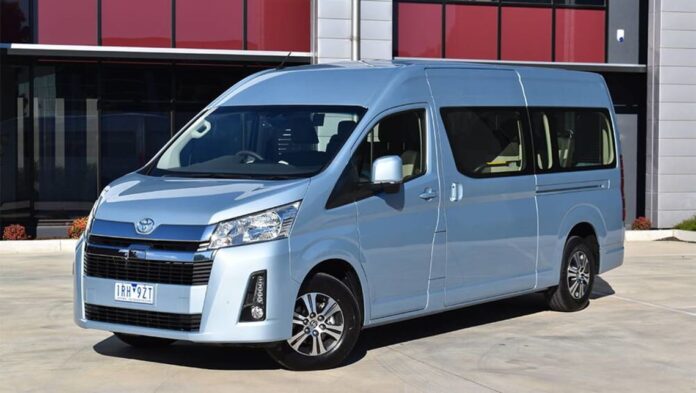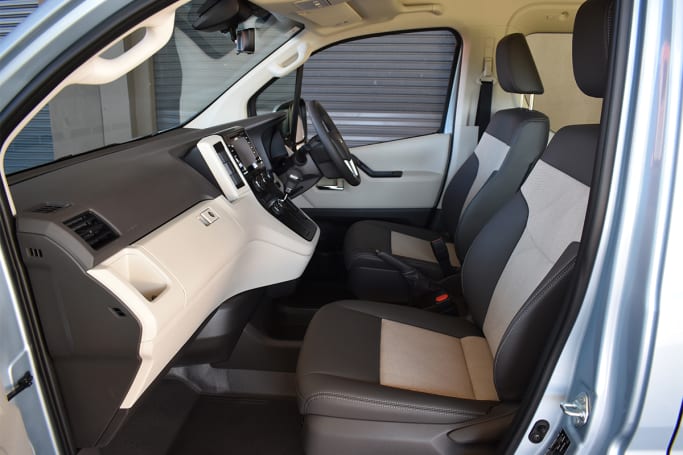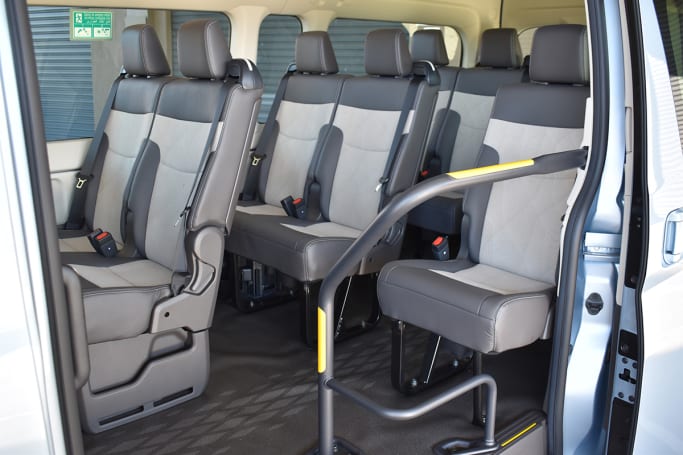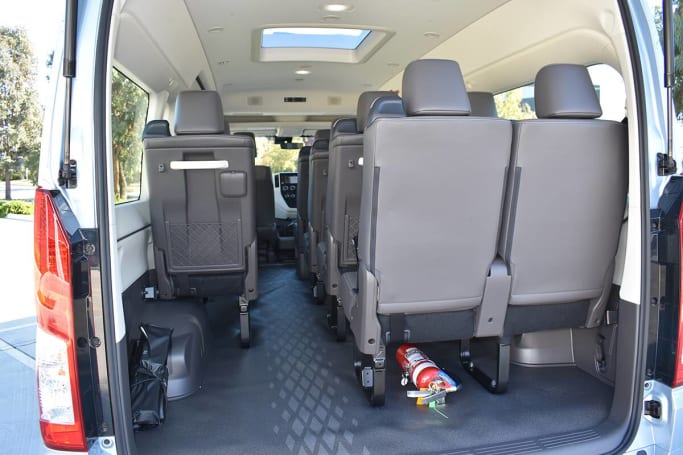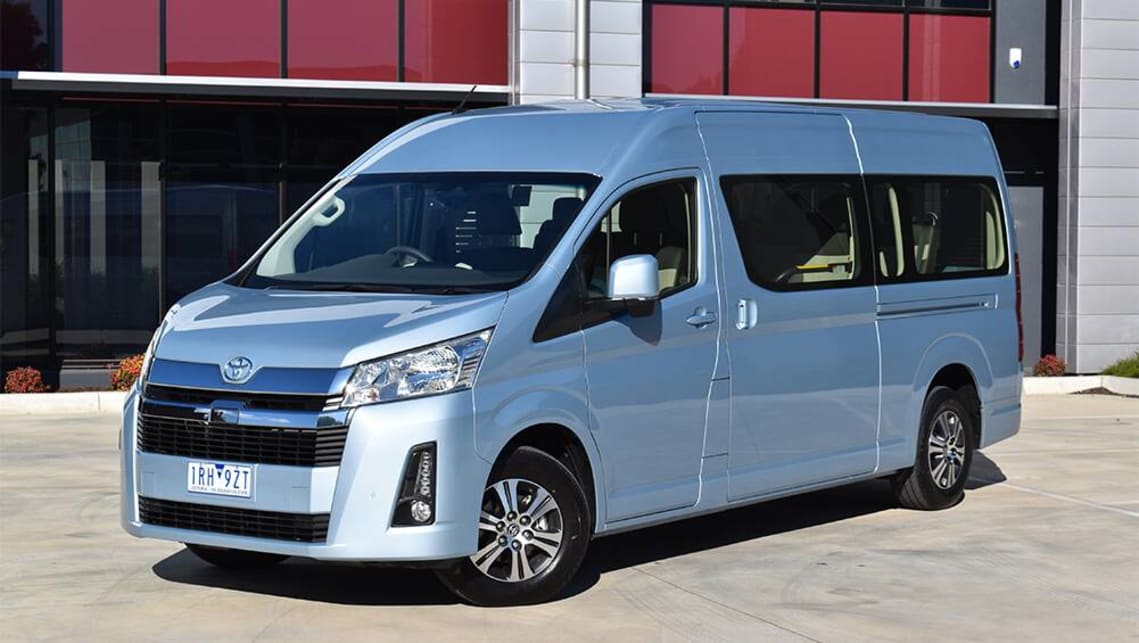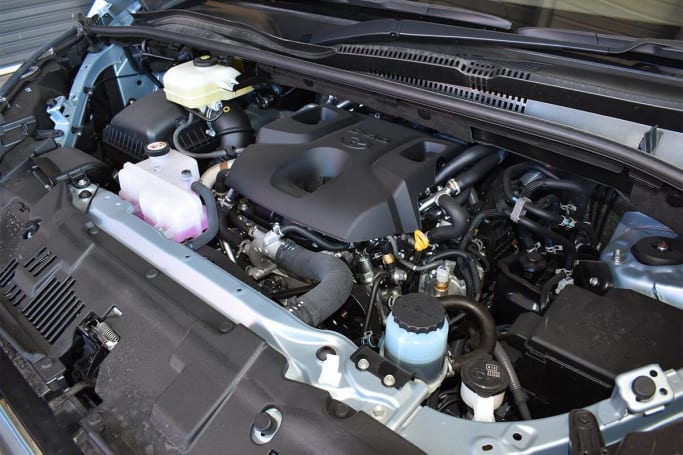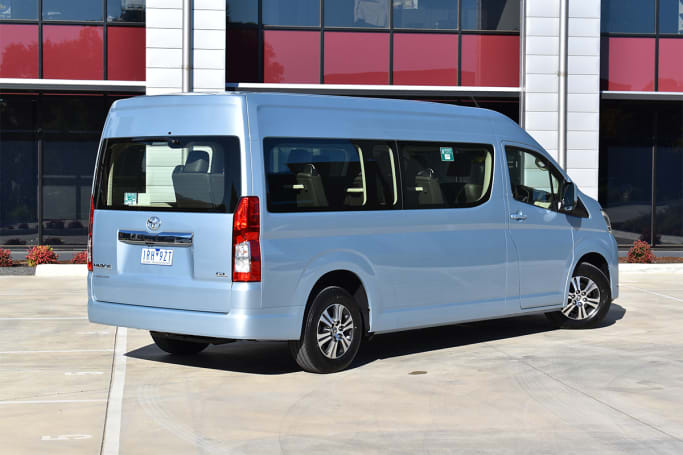Toyota HiAce new model review: Cars Guide: Toyota’s latest generation HiAce mid-sized van is a comfortable, practical and competent load-hauler in both long wheelbase (LWB) and super-long wheelbase (SLWB) configurations.
The SLWB is also available with windows all-round and a dozen seats, which Toyota calls the Commuter.
This commercial-van-turned-light-bus has been a popular variant since the second-generation Toyota HiAce in the 1970s and the latest model continues to set a formidable benchmark. The Commuter is available in either standard specification, or higher-grade GL trim.
Both share the same 2.8 litre turbo-diesel engine and six-speed torque converter automatic transmission. The GL badge brings extra bling, starting with shiny 16-inch alloy wheels (the only Toyota HiAce with standard alloys) and 235/65 R16 tyres plus a full-size steel spare.
Unique to the GL is also a choice of four exterior colours and body-coloured bumpers, door handles and mirrors which give a more upmarket look.
Plus there’s an electrically-powered sliding side door with driver remote control, LED daytime running lights, glass roof escape hatch, leather-accented steering wheel, synthetic leather/fabric seats and digital rear-view mirror with auto dimming.
There are also numerous features shared with the standard model including a quality infotainment system with 7.0-inch colour touchscreen, steering wheel-mounted controls and multiple connectivity including Apple CarPlay, Android Auto and CD inputs.
The driver gets a 4.2-inch colour multi-info display, plus there’s cruise control, reversing camera, heaps of USB charging ports in the passenger zone and lots more.
Sturdy grab handles on the A pillars and above the front door openings make for easy entry for the driver and front passenger.
The front bucket seats of the Toyota HiAce are manually adjustable for height, length and backrest angle, but there’s no lumbar support or base cushion rake adjustments. Even so, they provide good overall comfort and support.
The 10 rear passengers have access to a roof-mounted climate control panel behind the driver’s cabin and all seating positions have an adjustable roof-mounted air vent. Most also have their own pop-out cup holder, elastic mesh storage pocket, reading light, USB port and wall-mounted cup/small-bottle holder.
Including the driver and front passenger, the Commuter has five rows of seating. And in commercial airline tradition, the comfort level decreases the closer you get to the tail.
The second row consists of two RHS (right-hand side) seats opposite the side entry door, which have reclining backrests and offer the most legroom, but miss out on the pop-out cup holders and storage nets.
The third row has twin RHS seats and a single LHS seat, with reclining backrests on the twin but not on the single. There’s adequate knee-room in the twin, even for tall adults, but the cup/small-bottle holder in the wall cavity is partially blocked by your hips when seated and is awkward to access.
The LHS single seat, being closest to the side door entry, has a big protective frame in front of it which can feel a bit squeezy depending on the passenger’s size.
Fourth row seating is the same as row three except that there’s literally no knee-room for tall adults.
The fifth and final row has twin RHS seats only, with similar knee-room restrictions plus fixed backrests and no USB ports or reading lights.
The rearmost window seat is the worst of the lot, as the foot room is halved by intrusion of the rear wheel housing. So, this back row is only for small kids or adults that lose at papers-scissors-rock.
To the left of row five is open floor space with storage for the tool kit bag (mounted on the wheel housing) and a limited amount of luggage, which is easily loaded through the large single-lift tailgate. However, there are no anchorage points provided to secure it.
The glass roof escape hatch if the Toyota HiAce doubles as a sunroof, which creates a bright and airy feel in the passenger zone. However, given that it’s clear glass with no retractable blind or cover provided, it could also be uncomfortable sitting beneath it with a midday summer sun overhead.
Toyota’s 1GD-FTV 2.8 litre four-cylinder turbo-diesel, which is also found under the bonnets of the current HiLux ute plus Prado and Fortuner SUVs, produces 120kW at 3600rpm and 420Nm of torque between 1600-2200rpm.
This is slightly less than the 130kW/450Nm in the SLWB Van on which the Commuter is based. The Aisin AC60E six-speed torque converter automatic has full converter lock-up on fourth, fifth and sixth gears, along with overdrive on fifth and sixth for economical highway driving and the option of sequential manual-shifting.
Toyota does not publish an official combined figure for the Toyota HiAce. So, our own number, calculated from fuel bowser and tripmeter readings after almost 250km of testing, with no payload and the auto stop/start function activated, worked out at 11.0L/100km.
That’s pretty thrifty for a vehicle of this size and weight. So, based on our figures, you could expect a realistic driving range of around 640km from the Toyota HiAce 70-litre tank.





